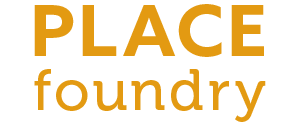Ecosystem mapping your preferred future
As I read The Courage to Be Disliked, I connect why I have defaulted toward ecosystem thinking and strategies to achieve transformative place development. As you read the book, you will see an entire conversation play out between etiology and teleology.
Say, what?
Etiology focuses on trauma (cause and effect). Teleology focuses on purpose, goals, and to what end. Both are two distinct approaches to make sense of today and advance toward tomorrow.
I find myself falling into the “what or who caused this” approach often. But as I read this book, I see the connection between when I stay stuck vs. when I show up, engage, and thrive.
Further, it’s giving me more insight into why some places remain stuck in the past vs. repositioning themselves toward becoming a vibrant, connected, and inclusive place. The first step of transformative place development is the choice to move forward when surrounded by stagnation, decline, or distress.
I’ve found that ecosystem mapping repositions how you see real challenges and obstacles. It leads to co-creation and shared values with more profound impact and vast benefits. It does not mean you ignore the real issues of gentrification or disinvestment. Instead, you move down the path of repositioning your assets -- people, land, and marketplace - to become a magnetic destination for learning, commerce, housing, and healthy living.
While we won’t get everything right along the way, having a preferred future map repositions us from stagnating to thriving places.
